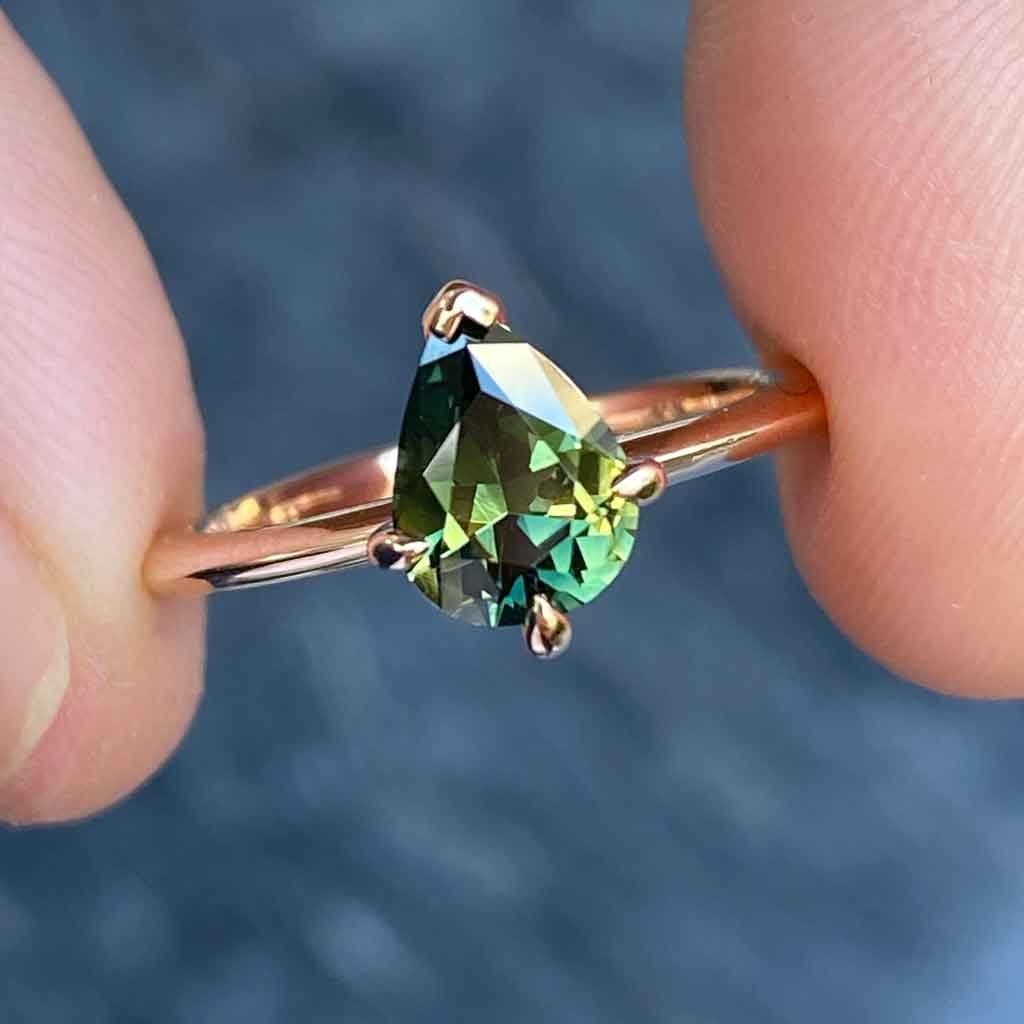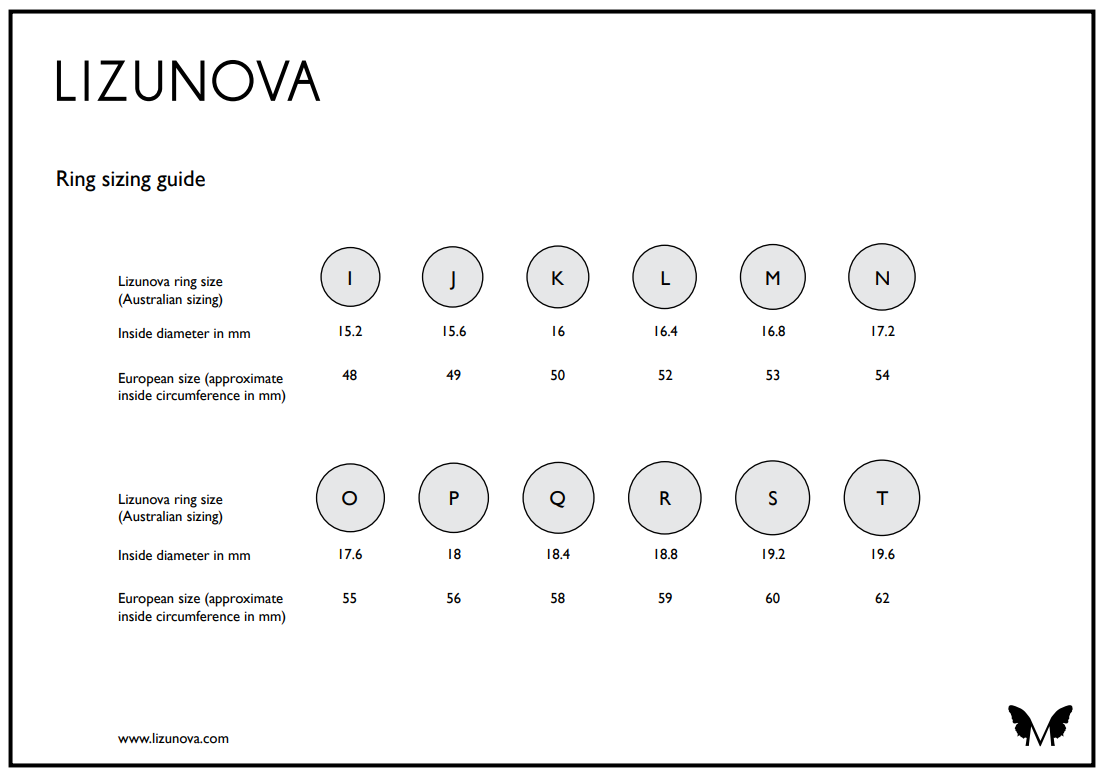Sapphire is a precious gemstone and part of the most important gem family - corundum, which also includes ruby. Both sapphire and ruby have been used in important jewellery, such as imperial crowns, for centuries, and have consistently risen in value and popularity, due to their rarity, beauty, durability and versatility. They have the same chemical composition and structure, with presence of certain metals determining their colour. Corundum is also known for its high density, unusual for a transparent mineral.
Sapphire has become the centre stone of choice for contemporary engagement rings due to its durability, beauty and incredible variety of colour. It works exceptionally well in a multitude of ring designs, from the simple and timeless solitaire, to trilogy, or three stone ring design, to the more intricate diamond halo designs, or unique, asymmetric ring designs.
Here we look at the colours, value, durability and other characteristics of this gorgeous gem.
Sapphire Colours
Sapphire is the most precious blue gemstone, and blue is this gem's most well known colour. But they naturally occur in a rainbow of colours beside various shades of blue: teal, black, white, grey, orange, pink, green, purple, yellow and the rare and extremely valuable Padparadscha (pinkish orange).
Bi-colour or parti sapphires (stones with two colours in the same crystal, eg yellow and blue) occur in Australia as well as Africa (Madagascar, Tanzania and Nigeria).
All sapphires are made of the same elements, aluminium oxide (α-Al2O3) but the trace elements present in the growing process, such as such as iron, titanium, chromium, vanadium, nickel and magnesium, give each stone its unique colours.
Sapphire Durability
Corundum family is the hardest, most durable natural gemstone after diamond and measures 9 on the Mohs hardness scale, making it a popular choice for jewellery worn every day, such as engagement rings. Despite their durability, they should be protected like any other precious stone, and sapphire jewellery should be removed before engaging in heavy work, such as gardening or construction, or work that would expose them to harsh chemicals.
Value
Sapphires have for centuries been associated with wealth and royalty. They are valuable gems, especially larger stones, but those of high colour saturation and particular shades of blue - royal blue and cornflower blue), as well as pinkish orange (Padparadscha) are particularly prized. Blue sapphires are valued for the purity of the blue hue, without secondary hues of purple or green. Blue sapphires of vivid saturation and pure blue hue command the highest prices. Vivid pink sapphires, their colour and saturation determined by the quantity of chromium, are also highly prized. Red corundum is called ruby, less saturated stones are classified as pink sapphires.
Sources of Sapphire
Sri Lanka produces many beautiful sapphires of gem quality. Blue sapphires from Kashmir and Sri Lanka are among the most valuable. Other sources of sapphire include Africa (Tanzania, Nigeria, Madagascar, Kenya, Malawi), Brazil, Myanmar (Burma), Thailand, Vietnam and United States (Montana). Many of the unique parti and green sapphires hail from Australia (Queensland and New South Wales).
Treatments
Heating is a common treatment that lightens or intensifies colour, improves uniformity and enhances clarity. A sapphire is gently heated in a kiln to remove or dissolve any silky rutile inclusions back into the matrix of the stone. Heating does not damage the gem and is a lasting treatment that does not wear off with time.
Synthetics
Corundum has been synthesised since the beginning of the 20th century. Synthetic sapphire is mostly used in many industrial applications, such as scratch resistant glass, semiconducting circuits and lasers. Synthetic corundum can be recognised under magnification by the curved growth lines following the top surface of the rough crystal. Natural corundum crystals have angular growth lines expanding from a single point and following the planar crystal faces.
Specifications
Hardness: 9 Mohs
Specific Gravity: 3.95-4.03
Refractive Index: 1.760-1.774
Crystal Form: Trigonal. Crystals occur as barrel-shaped, double-pointed hexagonal pyramids and tabloid shapes. Corundum is found in igneous and metamorphic rocks and also in alluvial deposits.
Treatments: Heating
Special Care: None
Durability: Very good
Sapphire in jewellery
Sapphires have been highly prized and used in important jewellery for centuries - from royal crowns to famous engagement rings, such as Princess Diana's sapphire and diamond halo ring, now belonging to Kate Middleton. Due to its exceptional versatility and durability, sapphire is beloved by modern couples as the engagement ring centre stone of choice, and it allows unparalleled self expression in ring design. We love working with this beautiful gem and have a collection of handpicked loose sapphires from Australia, Sri Lanka and Africa to create the perfect engagement ring to cherish forever. We work with customers all over the world and ship internationally. In person and online appointments are available - book your complimentary bespoke engagement ring design appointment or email us with any questions. We look forward to working with you on creating your dream ring!
Image: Parti Sapphire Engagement Ring By Lizunova Fine Jewels



